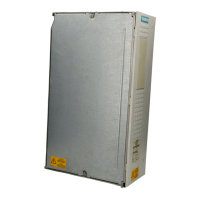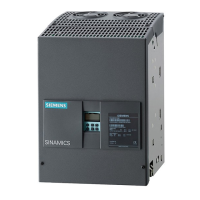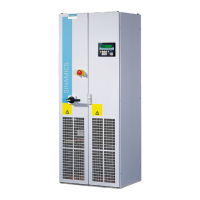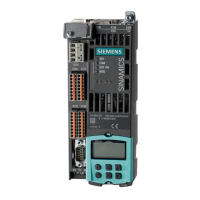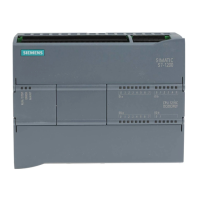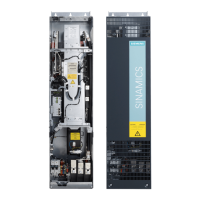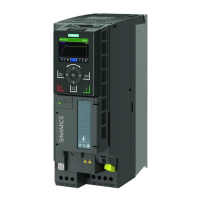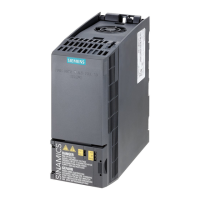5
05.01
5.5 Induction motor control with analog setpoint interface 6SN1122–0BA1_–0AA_
5-123
Siemens AG 2001 All rights reserved
SIMODRIVE 611 Planning Guide (PJU) – 05.01 Edition
It should be observed, that for an inverter clock frequency above 3200 Hz, the
module current rating must be reduced, or if required a higher–rating module
should be used.
S The max. field weakening range for induction motor operation is limited. The
following relationships are valid:
n
max
n
FS
v
2 for high–speed motors (max. output frequency > 300 Hz),
5 for wide–range motors
standard motors
n
max
Max. motor speed
n
FS
Speed at the start of field weakening (motor)
V
DC
link
1.6
V
Nmot
Approximate value
can be calculated with n
FS
[
n
N
(refer above)
One auxiliary and one main contactor are required if a motor changeover is
made. The motor contactors must be mutually interlocked. Changeover is only
realized when the pulses are inhibited. At the changeover command, the new
motor data set is loaded and the auxiliary contactors are controlled via the se-
lect relays.
Parallel operation of several induction motors connected to an induction mo-
dule, refer to Section 9.11.1.
S The voltage drive across a series reactor depends on the motor current
and the motor frequency. If an uncontrolled infeed is used, the maximum
rated motor voltage is a a function of the line supply voltage. The following
approximate values are recommended when dimensioning the motor so that
there is an adequately high motor voltage available:
f
max,
motor
400 Hz 600 Hz 800 Hz 1000 Hz 1200 Hz
I/R module V
DC
link
=625V
V
N,
motor
400 V
RMS
380 V
RMS
360 V
RMS
340 V
RMS
320 V
RMS
VE module V
supply
=400V supply waveform: Sinusoidal
V
N1
motor
320 V
RMS
300 V
RMS
If these approximate values are not observed, then power reductions
can be expected in the upper speed range.
5 Control Modules
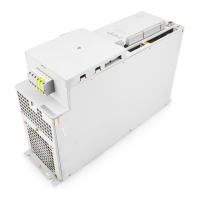
